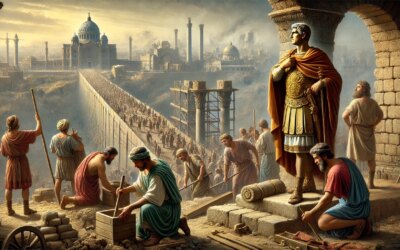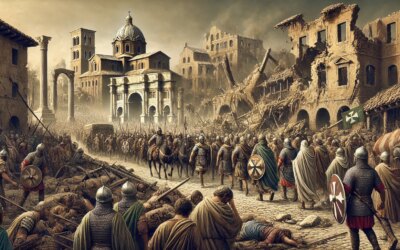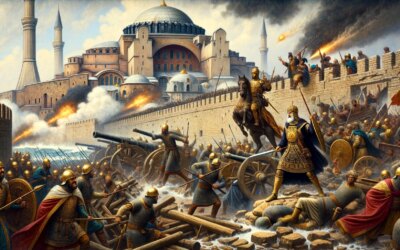Introduction: A Crusade Turned Catastrophe
The Fourth Crusade, launched with the goal of reclaiming Jerusalem, took an unexpected and tragic turn. In 1204, instead of liberating the Holy Land, Crusader armies sacked Constantinople, the heart of the Byzantine Empire. This event shocked the medieval world, leaving a permanent scar on East-West relations and altering the course of history.
The Road to Betrayal
Originally intended to sail to Egypt, the Crusade became entangled in Venetian politics and Byzantine intrigue. Unable to pay the Venetians for their fleet, the Crusaders agreed to assist in capturing the Christian city of Zara, a move that already tarnished the expedition’s spiritual legitimacy. The path then led to Constantinople, where internal Byzantine power struggles provided an opportunity for intervention.
The Siege of Constantinople
In 1203, the Crusaders installed Alexios IV Angelos as co-emperor, expecting lavish payment and support. However, Byzantine resentment grew, and Alexios was overthrown and killed. In retaliation, and driven by greed, vengeance, and broken promises, the Crusaders laid siege to Constantinople again in 1204. After fierce battles at the sea walls and gates, they breached the city’s defenses in April.
The Plunder and Destruction
The sack was brutal. Churches were desecrated, including the Hagia Sophia; relics were stolen or destroyed; citizens were slaughtered or enslaved. Priceless artworks and treasures were looted, many ending up in Western Europe, where they remain to this day. Contemporary chroniclers, including those sympathetic to the Crusaders, recorded the horror and shame of the event.
The Aftermath: Fragmentation and Decline
The aftermath saw the establishment of the short-lived Latin Empire (1204–1261), with Crusader nobles dividing Byzantine territories among themselves. However, the weakened state of the empire made it vulnerable to external threats, hastening the decline of Byzantine power. When the Byzantines retook Constantinople in 1261, the city had been irreparably damaged.
Impact on East-West Relations
The Sack of Constantinople deepened the schism between Eastern Orthodox and Western Catholic Christianity. Mutual distrust and resentment lingered for centuries, contributing to later conflicts and complicating any hopes of unity. The event stands as one of the greatest betrayals in Christian history.
Legacy of the Sack
Beyond immediate devastation, the Sack of 1204 symbolized the tragic consequences of diverted ambition and spiritual corruption. It marked the true beginning of the Byzantine Empire’s slow demise and demonstrated how easily religious fervor could be manipulated for political and economic gain.
Conclusion: Lessons from a Fallen City
The Sack of Constantinople serves as a sobering reminder that even causes cloaked in righteousness can be derailed by human failings. It reshaped medieval geopolitics, tarnished the reputation of the Crusades, and stands as a tragic chapter in the shared history of East and West.






